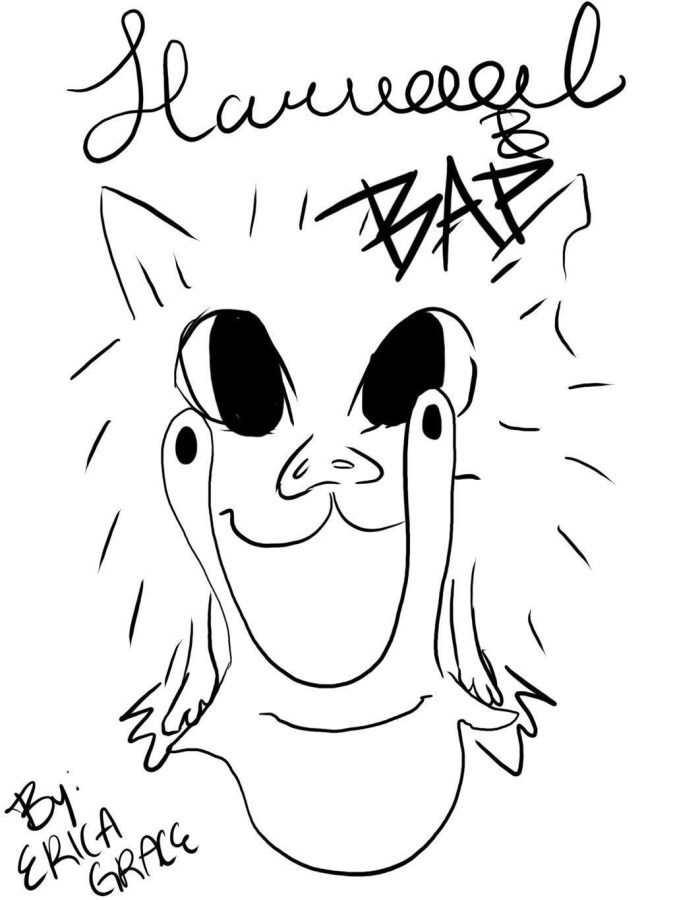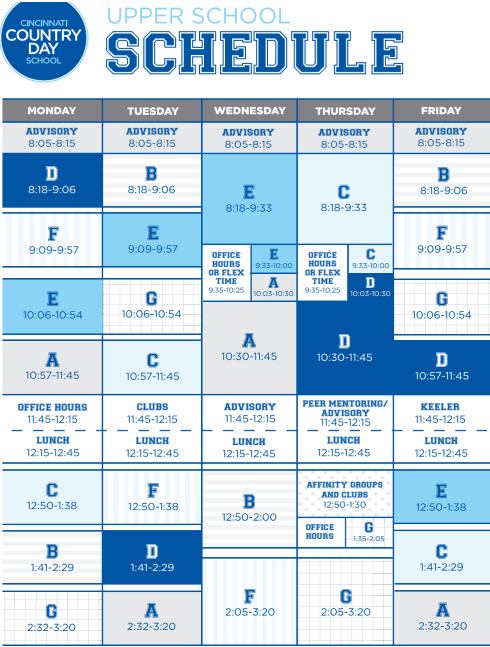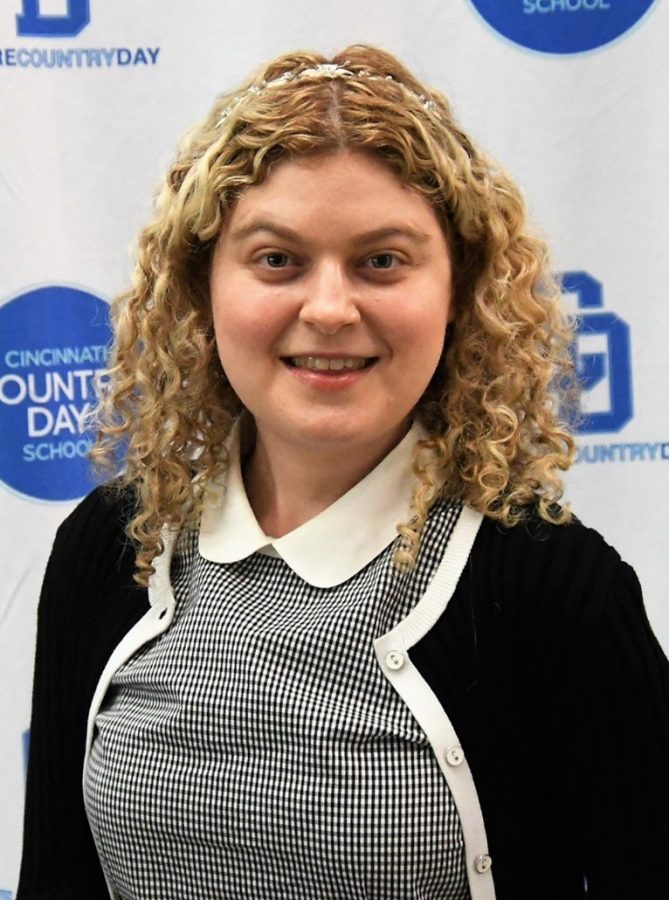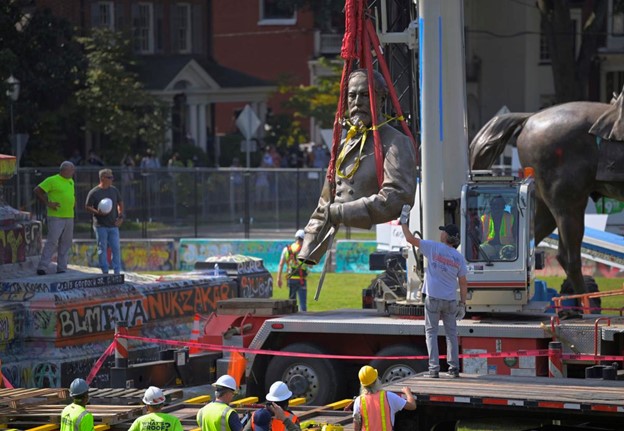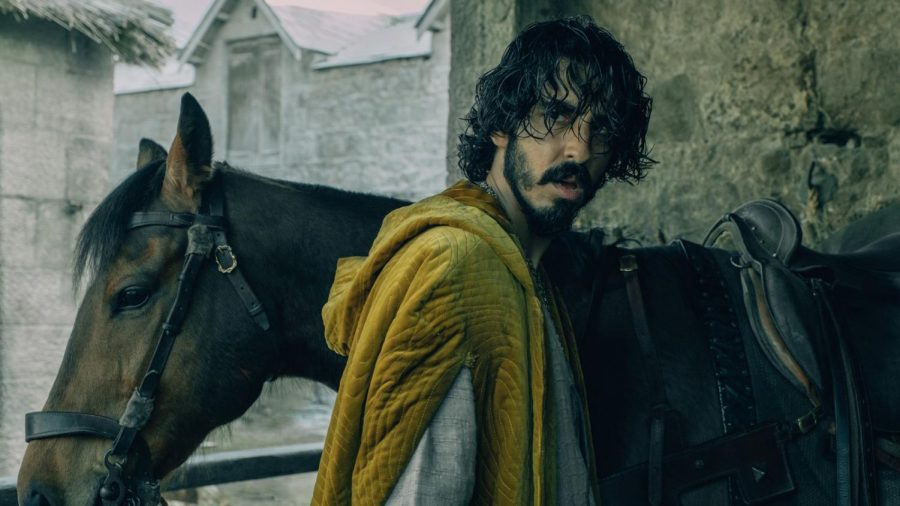By Will Beyreis ’20, Contributor
Since the start of school, Country Day’s eighth grade students have been hard at work with Middle School Art Teacher Ully Marin crafting puppets and masks for their upcoming musical, The Lion King. The veteran art teacher has students designing and building masks of hyenas, zebras, and lions; many of which sit suspended from the ceiling, still in varying stages of the creation process. Each is different in size, shape, and design. Construction has been underway since the first week of school, first with students doing research on how their character has been portrayed on Broadway and in other shows in order to create their design. Following research, students created a “thumbnail sketch,” which allowed them to plan their design on paper and create a rough, not-to-scale drawing. From there, a life-size sketch was created to be referenced during production. The first stage of mask creation is usually crafted with paper mache and applied to a balloon, then details are added with cardboard and more paper mache is applied. This creates a base that paint will adhere to well and cover evenly.
Mr. Marin has been making props for the Eighth Grade Musical for three years, beginning with Beauty and the Beast, put on by the class of 2019. In the past two years he has expanded the production to include puppets, such as the dragon crafted for last year’s Shrek the Musical, put on by the class of 2020. The dragon was operated by four students, with a working mouth and eyes that blinked and glowed. This year the puppetry and mask construction has exploded in scale, with 20-25 projects in progress at this time. They range in size from smaller character masks, to large body puppets worn and manipulated by actors, to the even bigger elephant puppet, which is controlled by about 3 to 5 students. When asked what he has had the most fun creating over the past three years, Mr. Marin said that he was fond of the dragon and the elephant: “I like making large things, because you get challenged on the mechanics of things and how they get operated”. When asked what was the most challenging, his answer was the same two puppets that he enjoyed making the most, saying the difficulty was not in constructing large things, but making them moveable and operable by students.
Mr. Marin’s interest in puppetry comes from a deep-seeded love for building things: “[He has] been building things ever since [he] could, so puppets were sort of a natural next step”. When Mad Cap Puppets came to teach the Lower Schoolers how to build puppets, Mr. Marin became inspired to build, and “from that [he] sort of thought, ‘I think I can do this’”. From there it was off to the internet for some research and self-instruction. “And I’m still learning!”, Mr. Marin laughed– “Every time I run into a problem I sit back and look at what’s not working, and re-work it or come at it from a different approach. I think one of the thrills about this is the problem solving”.
And there can be many problems to be solved. The design process for the dragon involved meticulous planning as well as trial and error. He also taught himself to use the puppets, again with help from Mad Cap Puppets, saying that “[he] always loved the question and answer sessions after their shows because they were sharing how their puppets were made and how they manipulated them. [He is] grateful for that because having them show how they manipulated puppets helped [him] understand how to become a puppeteer”.




